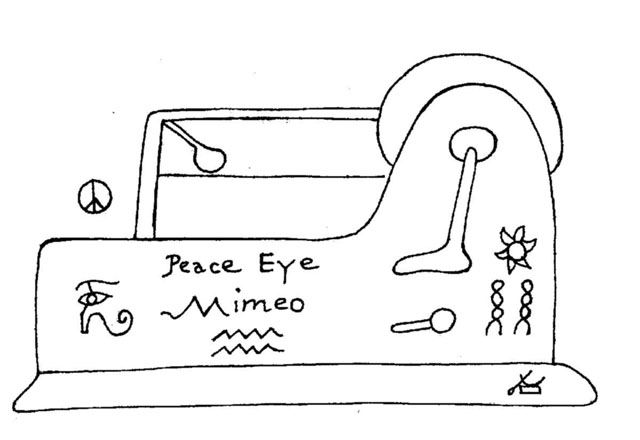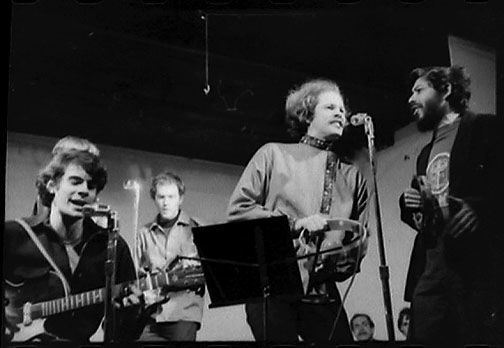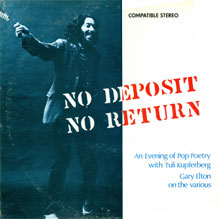 |
| CAConrad, purveyor of (soma)tic poetry rituals, at Philadelphia's Reading Terminal Market. |
As we make the transition from thinking about poetic practices influenced by technology to poetry in performance, an understanding of the body and its role in the poetic practice will be useful. We'll spend Wednesday's class considering this question from a number of perspectives.
First up, we'll take a look at "The Grain of the Voice," a classic essay by Roland Barthes, which considers the specific place of the body, as the physical manifestation of the speaking subject, in light of some of the ideas we've already discussed during our foundations class on Barthes: [PDF]
From there, we'll move on to the work of CAConrad, who's pioneered the field of somatic poetics over the last several years. We'll read a few excerpts from his 2012 book A Beautiful Marsupial Afternoon: New (Soma)tics, which begins with "The Right to Manifest Manifesto," where Conrad gives some background on the practice:
We'll read several somatic rituals and the poems that they yielded; recordings of select poems can be found below: [PDF]I cannot stress enough how much this mechanistic world, as it becomes more and more efficient, resulting in ever increasing brutality, has required me to FIND MY BODY to FIND MY PLANET in order to find my poetry.
(Soma)tic poetry is a praxis I've developed to more fully engage the everyday through writing. Soma is an Indo-Persian word which means "the divine." Somatic is Greek. Its meaning translates as "the tissue", or "nervous system." The goal is to coalesce soma and somatic, while triangulating patterns of experience with the world around us. Experiences that are unorthodox steps in the writing process can shift the poet's perception of the quotidian, if only for a series of moments. This offers an opportunity to see the details clearer. Through music, dirt, food, scent, taste, in storms, in bed, on the subway and at the grocery store, (Soma)tic exercises and the poems that result are just waiting to be utilized or invented, everywhere, and anytime.
- distorted torque of FLORA'S red: [MP3]
- a little orange bag believe it or not CAN hold all that remains: [MP3]
- we're on the brink of UTTER befuddlement yellow hankie style: [MP3]
- say it with grEEn paint for the comfort and healing of their wounds: [MP3]
- rehab saved his life but drugs saved mine at the blue HOUR: [MP3]
- smells of summer crotch smells of new car's purple MAjestY: [MP3]
- from the womb not the anus WHITE asbestos snowfall on 911: [MP3]
- Guessing My Death: [MP3]
Another poet who's working with physicality in a very different way is Jordan Scott, who uses his stutter as a key part of "Flub and Utter: A Poetic Memoir of the Mouth," an innovated film/text/performance experience, which you can watch here: [link]
Finally, it might be worthwhile to consider a very different sort of interaction between sound and the body: ASMR, or Autonomous Sensory Meridian Response, which has been a controversial topic over the past several years. Defined as "a perceptual phenomenon characterized as a distinct, pleasurable tingling sensation in the head, scalp, back, or peripheral regions of the body in response to visual, auditory, tactile, olfactory, or cognitive stimuli," some people consider ASMR to be pseudoscience, while others swear by their experiences. In addition to the Wikipedia page on the phenomenon, VICE offers up one of the first mainstream media articles on ASMR.










